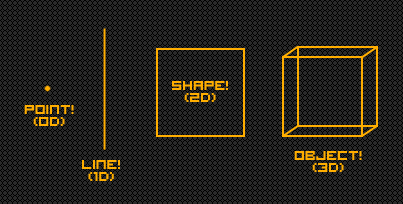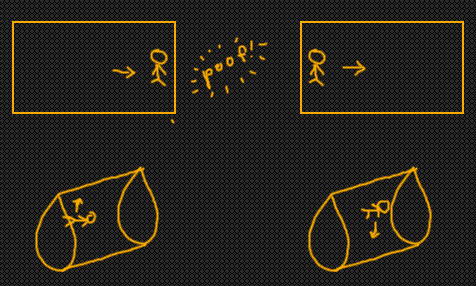Dimension
One way of defining what a dimension is, is the minimum number of co-ordinates you'd need to give to locate a certain point in that dimension.
For example, in your everyday 2D co-ordinate graph, you would need to give two co-ordinates to locate a point (generally, one each for the x and y axis). To locate something in a 3D space would require three co-ordinates (e.g. a stationary helicopter): longitude, latitude and altitude (height).

» The third dimension
Imagine that you are a flatlander (a 2D creature described on this page), walking across a piece of paper. Now imagine that a 3D creature (say, oh, a human, maybe?) picks up this piece of paper and folds it in such a way that one edge of the paper meets up with the opposite edge. Then you, the unknowing flatlander in your 2D world, could walk across this fold and onto the opposite end of the paper.
To you, the walking flatlander, this would be seemingly impossible, as you have now just teleported to the opposite end of your 2D world. Because you are a part of the piece of paper (the 2D world), you will have no knowledge of the fold that goes on in the dimension above.

So, another way of describing the third dimension is: the dimension where you can fold through to jump from one place to another in the dimension below.
» String Theory
In string theory, there are 10 dimensions, all of which are stacked, one on top of the lower one. If this is the case, then theoretically, time travel can be possible by folding the fourth dimension through the fifth dimension, just as the flatlander above has "teleported", in essence, from one point to another in the second dimension.

